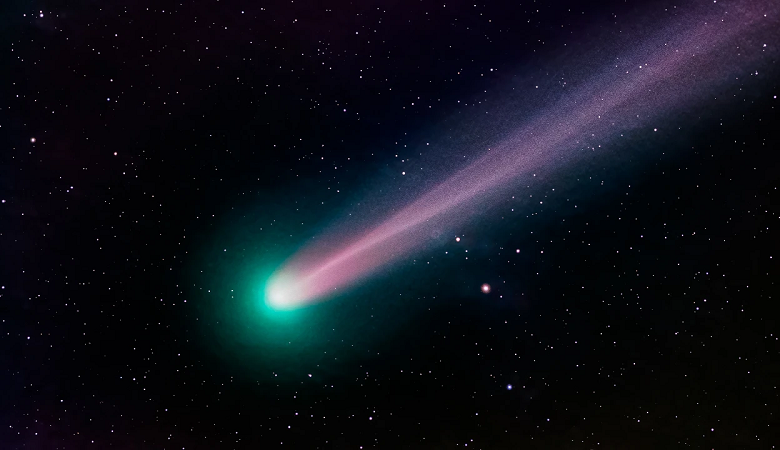How To View The Rare Green Comet, Which Will Soon Be Making Its First Flyby To Earth In 50,000 Years

Humans have always found the solar system, space, and everything else that makes up the immense expanse of the cosmos to be quite fascinating. And it is a time of tremendous wonder and excitement when a ‘notoriously unpredictable’ and uncommon green comet is spotted in the sky as it approaches the Earth after almost 50,000 years.
Since it was found in March 2022 at the Zwicky Transient Facility in California, US, the comet is known as C/ 2022 E3 (ZTF). It was detected on January 12 from a number of locations, including the UAE and India, and hasn’t penetrated Earth’s atmosphere or the inner solar system since the last ice age.
But early February is when astrophotographers and people in the southern hemisphere anticipate seeing it.
Everything you need to know about the bright green comet that is approaching the Earth
When will it be available to watch?
Rare green comet C/ 2022 E3 (ZTF) arrived at its perihelion, or closest point to the sun, on January 12 and is anticipated to arrive at its perigee, or closest point to the Earth, on February 2. The comet will be 42 million kilometers from our planet at this location.
How will the comet look in the sky?
Northern hemisphere spectators will have the best chance to see the uncommon comet in the northwestern morning sky before daybreak, according to a video by NASA’s Jet Propulsion Laboratory.
It may look like a faint, greenish smudge in the sky rather than a dazzling object to people without a telescope, and it is unlikely to have the dramatic, visible tail we saw on Comet NEOWISE in 2020. It ought to be visible through a telescope and be visible to the naked eye.
Binoculars or a telescope are recommended for enhanced chances of spotting and for a sharper picture of the uncommon green comet in the sky because comet brightness is highly variable.
Regarding the uncommon green comet C/ 2022 E3 (ZTF)
This means that the last time the extraterrestrial icy visitor apparently came close to our planet was in the Upper Paleolithic Age (ancient stone age) during the ice age. It is now passing by the globe after approximately 50,000 years. The Neanderthals or early homo sapiens lived in the world during that time. Humans are therefore unlikely to ever be able to view it again.
The celestial object was considered to be an asteroid when it was first spotted by a wide-field survey camera at the Zwicky Transient Facility while it was in Jupiter’s inner orbit. Later, due to its quick brightening as it traveled away from the planetary orbit and through the solar system, C/2022 E3 (ZTF) was determined to be a comet.
Why does the comet seem green?
In their basic form, comets are icy bodies with masses mostly composed of ice, rocks, frozen gases, and dust. The diameter of these closely clustered objects varies from a few kilometers to a few hundred kilometers.
The frozen gases are heated when these things approach the sun, which causes it to begin emitting gas and dust. This creates the dazzling glow that is visible in the sky. It often consists of two parts: a brilliant head known as a coma and a burning tail that can extend for several kilometers.
News Mania Desk






